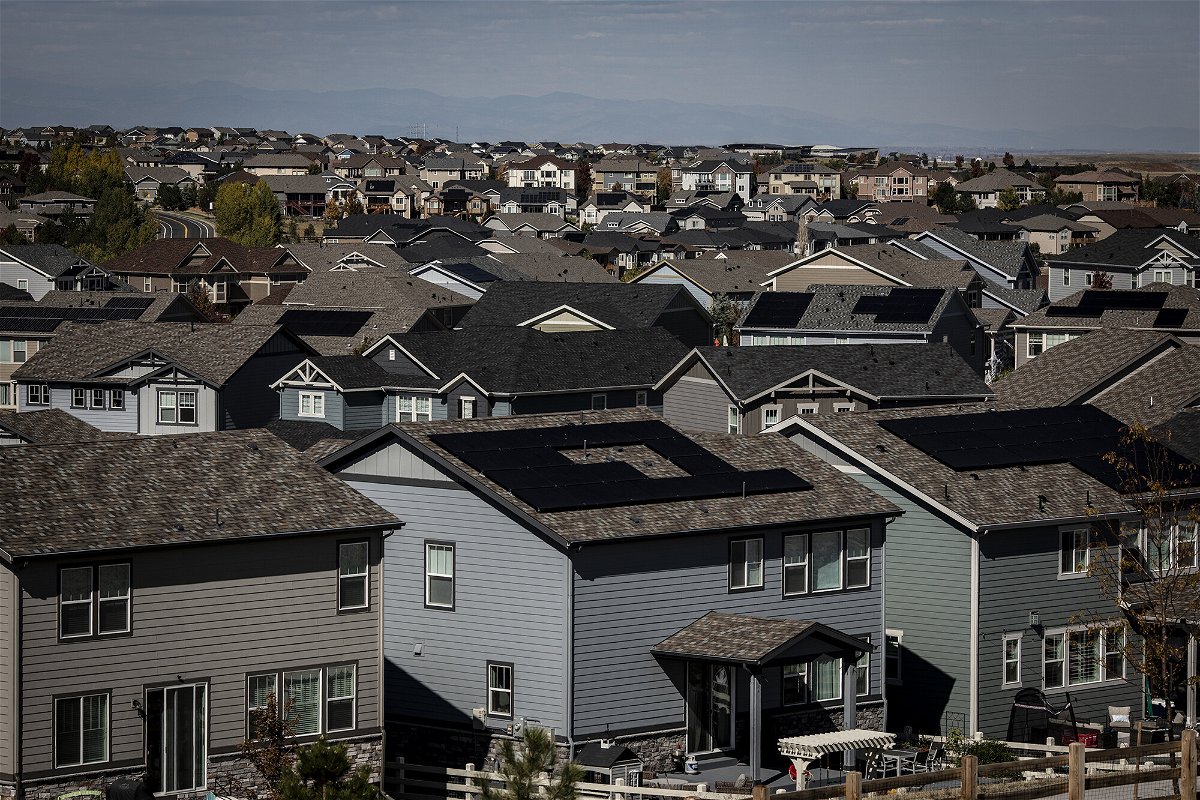Mortgage rates rise again, creeping closer to 7%

Mortgage rates rose again
By Anna Bahney, CNN Business
Mortgage rates rose again this week, stopping just short of the 7% mark.
The 30-year fixed-rate mortgage averaged 6.94% in the week ending October 20, up from 6.92% the week before, according to Freddie Mac. A year ago, the 30-year fixed rate stood at 3.09%.
Mortgage rates have more than doubled since the beginning of this year as the Federal Reserve pushed ahead with its unprecedented campaign of hiking interest rates in order to tame soaring inflation. The combination of the central bank’s rate hikes, investor’s concerns about a recession and mixed economic news has made mortgage rates increasingly volatile over the past several months.
“The 30-year fixed-rate mortgage continues to remain just shy of 7% and is adversely impacting the housing market in the form of declining demand,” said Sam Khater, Freddie Mac’s chief economist.
Home sales have been falling, month over month, since February and are now in the longest housing sales slump since October 2007 during the subprime mortgage collapse.
Rate hikes are taking a toll
The Fed’s aggressive rate hikes are taking a toll on the housing market.
While the Fed does not set the interest rates borrowers pay on mortgages directly, its actions influence them. Mortgage rates tend to track the yield on 10-year US Treasury bonds. As investors see or anticipate rate hikes, they make moves which send yields higher and mortgage rates rise.
This week, the 10-year US Treasury hit a high not seen since 2008, an indication that mortgage rates could rise even further.
Rising rates have scared off many home buyers. Mortgage applications are now into the fourth month of declines, dropping to the lowest level in 25 years, said Joel Kan, Mortgage Bankers Association’s vice president and deputy chief economist.
“The speed and level to which rates have climbed this year have greatly reduced refinance activity and exacerbated existing affordability challenges in the purchase market,” he said. “Residential housing activity, ranging from new housing starts to home sales, have been on downward trends coinciding with the rise in rates.”
Applications to purchase a home were down 38% from a year ago and refinances have fallen off a cliff, down 86% from last year, according to MBA.
But inflation is still running hot, which means rates could go even higher.
“With their next meeting two weeks away, the Fed will continue to take decisive action to bring prices back down to a healthy level,” said Hannah Jones, economic data analyst at Realtor.com.
Affordability remains a challenge
Higher mortgage rates are making it even harder for prospective buyers to afford a home.
“Buyers, builders and sellers alike have taken a step back to consider their best course of action given heightened mortgage rates and persistent inflation,” said Jones.
Home buyer sentiment hit its lowest level since 2011 according to Fannie Mae and home builder sentiment fell for the 10th month in a row this month as construction activity slowed, according to a report from the National Association of Home Builders. Sellers are responding to the shift in the market and pulling back on listing activity, resulting in a decrease in new listings compared to last year.
A year ago, a buyer who put 20% down on a $390,000 home and financed the rest with a 30-year, fixed-rate mortgage at an average interest rate of 3.09% had a monthly mortgage payment of $1,331, according to calculations from Freddie Mac.
Today, a homeowner buying the same-priced house with an average rate of 6.94% would pay $2,063 a month in principal and interest. That’s $732 more each month.
The average mortgage rate is based on a survey of conventional home purchase loans for borrowers who put 20% down and have excellent credit, according to Freddie Mac. But many buyers who put down less money up front or have less than perfect credit will pay more.
“Though price growth has cooled and prices have begun to come down, high and still climbing mortgage rates mean many of today’s buyers face larger home payments than they would have when home prices were at their peak,” said Jones. “Buyers who are able to be flexible may be able to find a deal this fall by zeroing in on affordable areas or by taking advantage of the market conditions and leveraging some bargaining power as homes sit on the market longer.”
The-CNN-Wire
™ & © 2022 Cable News Network, Inc., a Warner Bros. Discovery Company. All rights reserved.